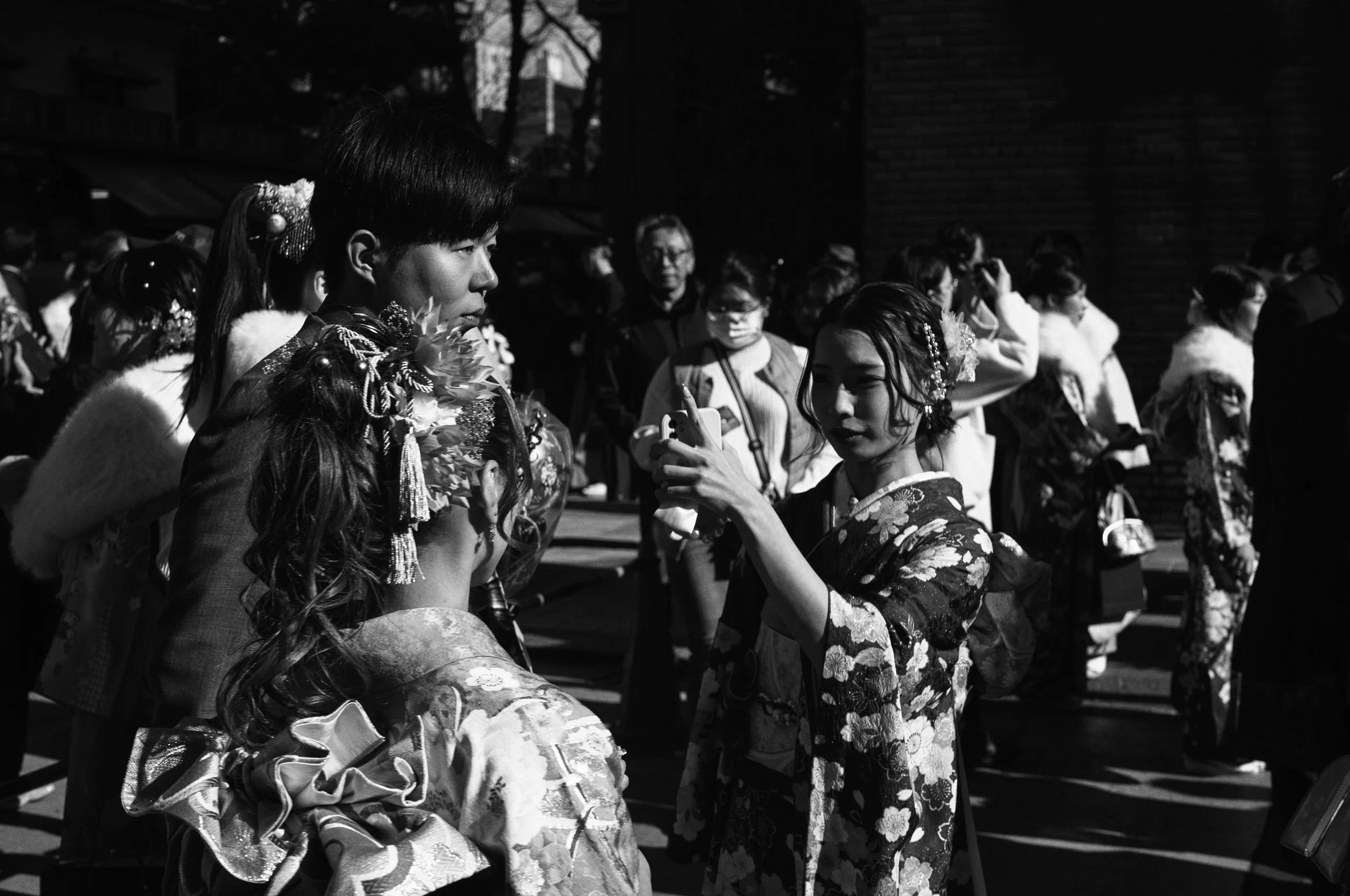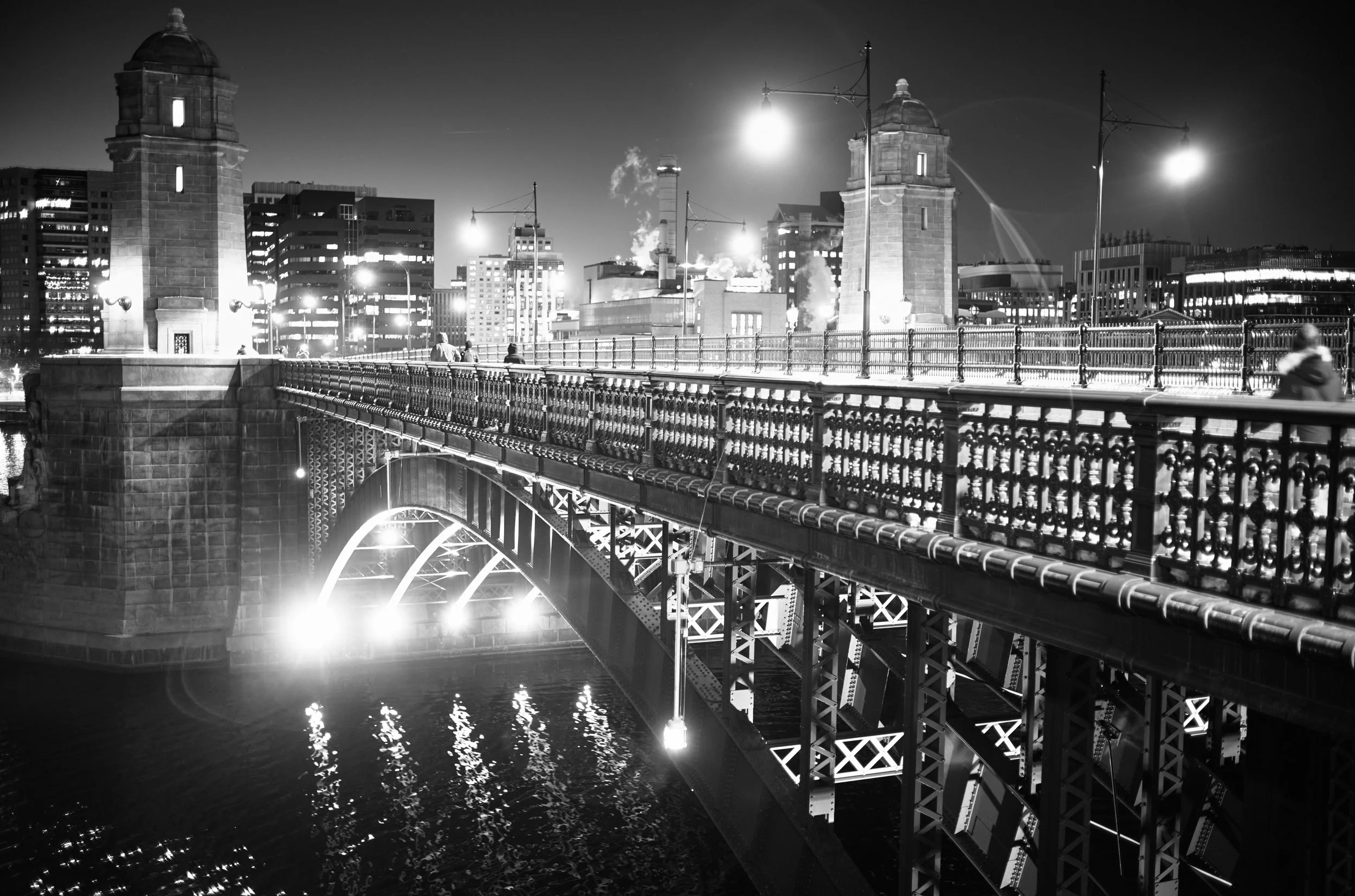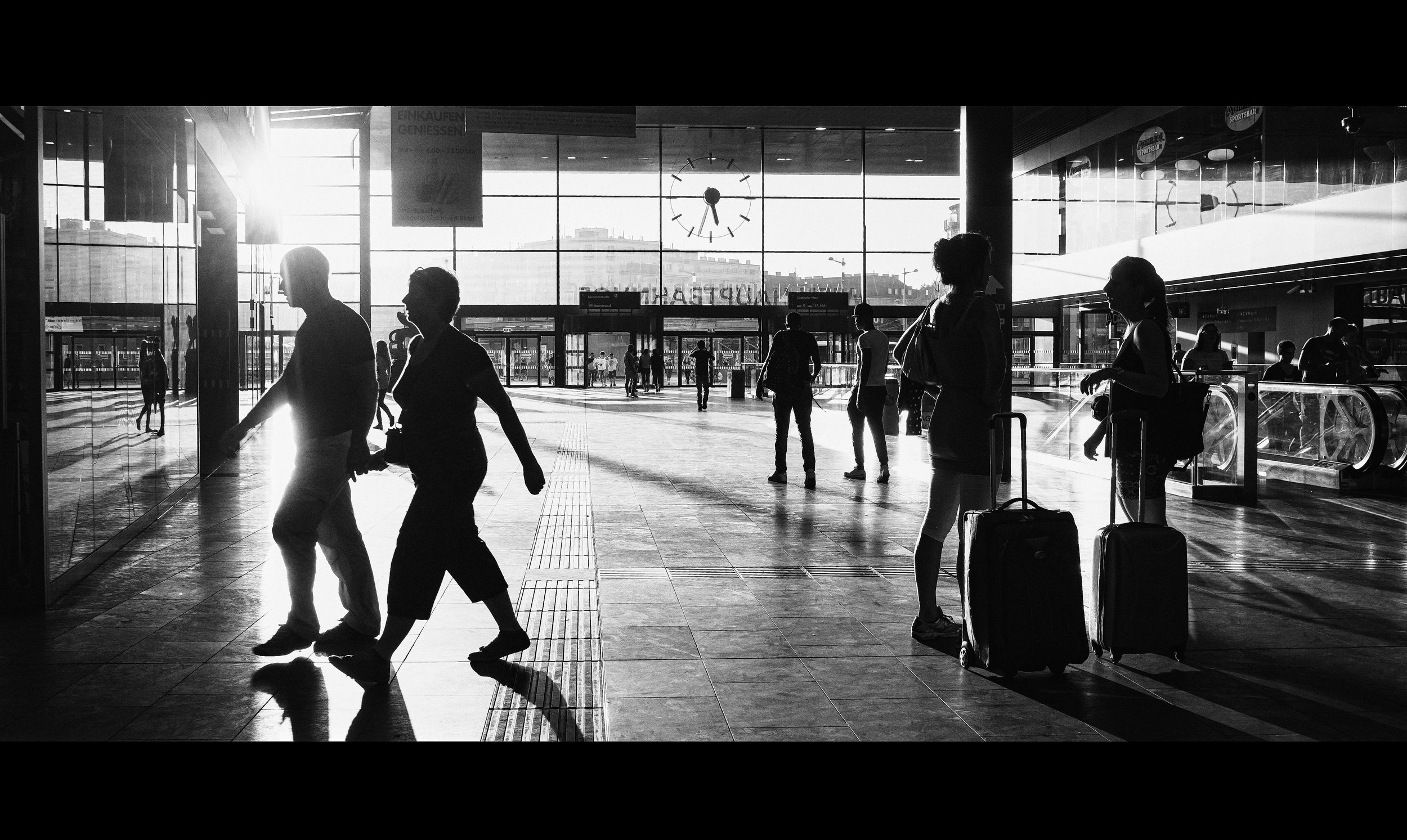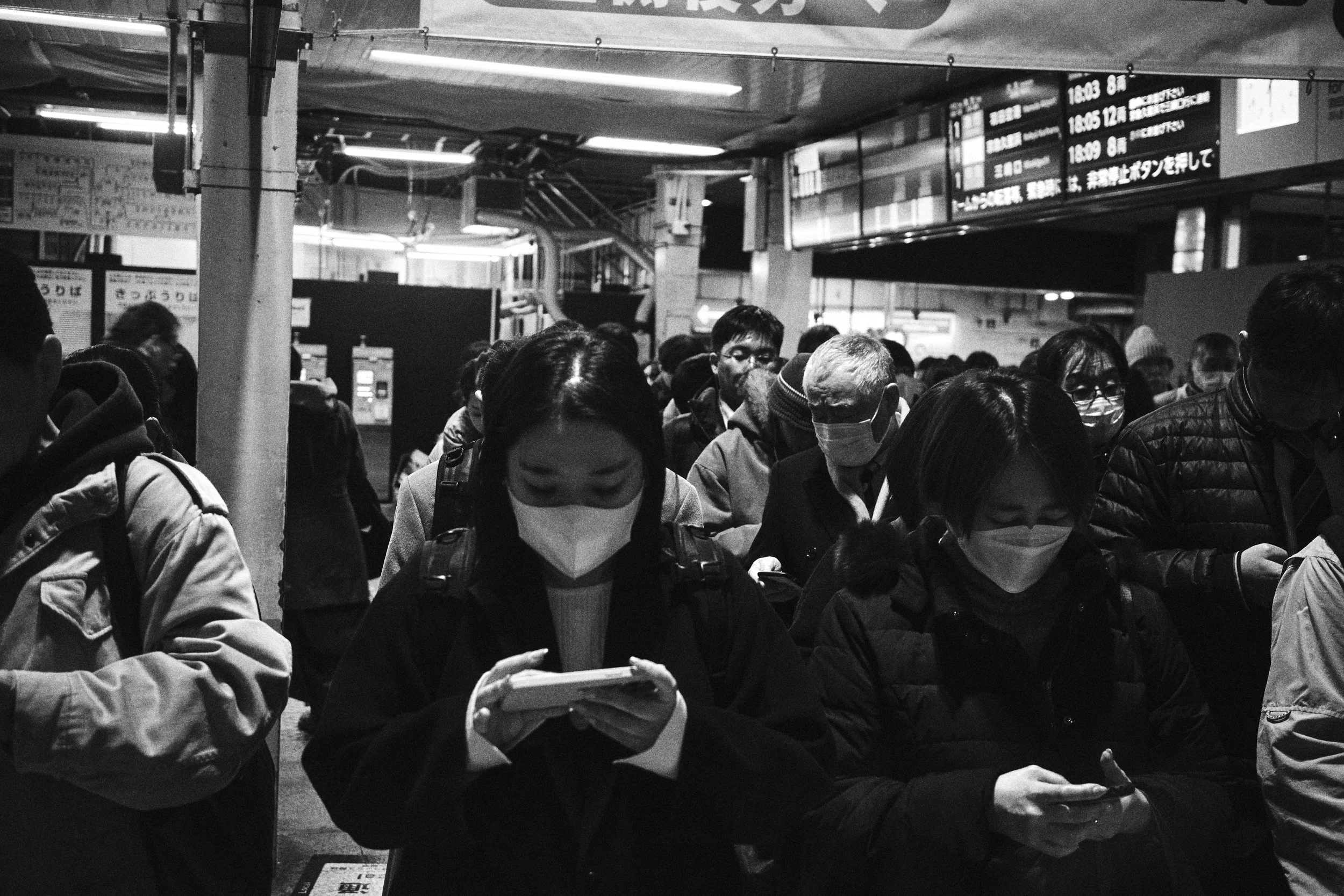LEICA M11 MONOCHROM
Intro
I recently took possession of a Leica M11 Monochrom (paid for with my own funds, using an M11 as a partial trade). Unloading the M11 wasn’t that difficult a decision - most of my colour work tends to be done in the evening or at night and so using the SL2-S makes things much easier because of the In Body Image Stabilization (IBIS). I previously owned a Leica M10M but had sold it because I didn’t want to lose too much money when the M11M came out - the principal reason that I wanted the M11 was battery life. I’ve had the M11M for a few months now and I already know that I like the M10M better in terms of its qualities as a tool - I prefer its heft, the shutter sound, and the smaller file sizes (the sweet spot for me is between 30-40MP, I don’t need more). What remains to be discovered is the difference that the newer BSI sensor brings to the table. Things I didn’t like about the M10M were its extreme pickiness when it came to memory cards, frequent lockups (particularly when shooting burst mode), overheating during the same, and battery life (I had three batteries with me at all times and that was barely enough especially in cold weather). I did strongly consider going back to the M10M - but it was next to impossible to get new batteries, and even securing the new improved version of the NiteCore dual charger proved impossible. The Leica chargers are ridiculously overpriced even on the used market.
A Short History of the Monochrom
1. Leica M Monochrom (Typ 246) – 2012
Sensor: 18MP full-frame CCD
Base model: Leica M9
Nickname: “M9 Monochrom”
In 2012, Leica introduced the world’s first full-frame digital black-and-white camera — the Leica M Monochrom. Built on the body of the Leica M9, it used a CCD sensor made by Kodak (similar to the M9), modified to remove the Bayer color filter. This sensor could now measure only luminance — no color interpolation, no demosaicing — just pure light data.
Why it mattered:
Image quality: Extraordinary sharpness, microcontrast, and tonal richness.
Dynamic range: Far improved over the color M9, especially in shadows.
High ISO: Cleaner than the M9, usable up to ISO 10,000.
Photographers, especially those working in street and fine art, immediately saw the potential. The files had a look that felt more filmic, more honest, and the camera itself invited slower, more thoughtful photography.
2. Leica M Monochrom (Typ 246) – 2015
Sensor: 24MP full-frame CMOS
Base model: Leica M Typ 240
In 2015, Leica updated the Monochrom using the newer M Typ 240 platform. This version moved from a CCD to a CMOS sensor, introducing some major changes:
Live View and EVF support
Higher ISO performance (up to 25,000)
Better dynamic range and resolution (24MP)
While some purists missed the "look" of the CCD-based original, many appreciated the flexibility and image quality improvements. This model brought Monochrom photography into the modern digital age — now photographers could shoot in darker environments and compose more freely with Live View and focus peaking.
3. Leica M10 Monochrom – 2020
Sensor: 40MP full-frame CMOS
Base model: Leica M10
The M10 Monochrom marked a major leap in resolution and refinement. It featured:
A newly developed 40MP sensor, designed specifically for monochrome imaging.
A thinner body, based on the sleeker M10 chassis.
Improved ISO range from 160 to 100,000.
The removal of all color-related hardware and software, resulting in unmatched image purity.
Leica also removed the signature red dot from the front, making this camera more discreet — ideal for street photography and reportage. The files this camera produced had breathtaking sharpness, with extraordinary tonal gradation and highlight retention. It remains my favourite - if there had been some way of increasing the battery life, I would not have switched - I prefer the styling, body size, files, and shutter sound (the most refined sounding of all the models).
4. Leica M11 Monochrom – 2023
Sensor: 60MP full-frame BSI CMOS
Base model: Leica M11
The M11 Monochrom represents the current pinnacle of Leica’s monochrome lineage. It introduces several key advancements:
60-megapixel BSI sensor, delivering excellent detail and improved performance in low light.
Triple-resolution RAW capture (60MP, 36MP, or 18MP DNG) using pixel binning.
15 stops of dynamic range — the highest of any Monochrom model.
ISO range: 125 to 200,000.
256GB of internal storage, USB-C charging, and a larger battery.
The current version. The files are flat and thus an excellent starting point for edits as opposed to the M10M files which have more contrast and already have a signature look which isn’t a world away from Kodak Tri-X.
Features
As already mentioned I preferred the rounded design of the M10M. The M11M has an electronic shutter - based on my experiences with the M11 I don’t find it particularly useful because of the distortion (tilted verticals) with any motion in an image because of the sensor readout speed of 1/10s. It also introduces issues with artificial light which are solvable by adjusting shutter speed. There is no baseplate on the M11M - the baseplate represented something easy to lose and difficult to replace from my perspective - nostalgic value only for those who are so inclined - I have a beautiful M-A to shoot film with, so that’s all the nostalgia I need. The uber-stealthy black finish and lack of Leica logo are appealing to me on both models. It’s not that I don’t like the logo, I just don’t feel the need to advertise (I like the blacked out logo on the SL2-S as well). 256GB of internal memory is great - I typically use 128GB memory cards (Sony Tough) which the M10M didn’t like at all but were fine on the M11. The connection to the Fotos App is much faster and makes the app actually usable now, whereas before I didn’t bother. The 3GB memory buffer is much larger and should avoid the lockup issues I had in the past with the M10M with the occasional use of burst mode. The USB-C cable port on the bottom is a nice touch, but make sure you have the latest Thunderbolt 3 version cable. The menu system is now almost identical to my SL2-S, thanks for that, much appreciated. I have no complaints with that system, it is simple to modify the quick menu. The shutter is louder and does that double click that the M11 does - closing off live view and then opening up the shutter. I prefer the M10M shutter sound which a quiet snick. One thing that resonated with me on the M11 was the highlight metering option which was added via firmware - the M11M has the same. My go to option is to use highlight metering to get an initial idea of what the settings are, and then adjust to taste in full manual mode. When in rapidly changing light conditions, shutter and aperture get set manually with the ISO set to auto. With the M10M I frequently shot at up to -5EV below what the metering indicated - it was really at the point where I barely paid attention to the camera meter. The last bit is one extra function button on the top plate and that the wheel on the back is clickable - I’m still deciding whether to assign it to ISO or exposure compensation, but I think EV will get the win. When you are recharging you’ll see a blinking green LED on the bottom of the camera - when it goes solid you’re all charged up. Several reviews have claimed that you won’t need ND filters anymore during the day because of the afore-mentioned electronic shutter - I disagree. I shoot with some of the fastest lenses available (Leica Noctilux 50/0,95, LLL “1966” 50/1,2, Leica Summilux 50/1,4 ASPH, Voigtlander Nokton 50/1,0) and I want to retain the ability to shoot wide open without the vertical artifacts. The new Maestro III processor also promises full UHS-II SD card compatibility - we shall see. I’ll be testing the camera with my preferred Sony Tough cards (short of actually assaulting one with a hammer, there aren’t any breakable parts on them). After about 10,000 images, there have been no hiccups, so the evidence indicates the issues have been solved.
ISO 125, 1/2000s, f2, Leica M11M with Voigtlander Ultron II 1:2/28mm
Image quality
The M11M and M10M have clear differences: the M11M is cleaner overall, whereas the M10M comes across more as a better representation of a more film-like quality. I’m not sure this appeals to me since I prefer things to look as close as possible to my most used black and white films, Kodak Tri-X 400 and Ilford Delta 3200. You can change the size of the file output, but after having gone through Sean Reid’s examination of the M11M files there doesn’t appear to be any incentive to do so. Initial viewing in comparison seems to show the M11M has better control over both highlights and shadows. However a consequence of this in the highlights appears to be that in the RAW files there isn’t any absolute white. The files though can occasionally have a slightly off/plasticky look to them in comparison with the more natural white and black points on the M10M files. If there was such a thing as an M10M but merely with the upgraded battery, I would prefer that. At the end of the day, although it was sometimes necessary to spend a great deal of time protecting highlights when shooting with the M10M, the results of just letting them blow out were not unpleasant to me. Essentially your start point is going to be either smooth with lots of midtones (M11M) or punchy (M10M). Some reviewers have used the “medium-format” adjective to describe the M11M - that remains to be seen. A recent trip to Japan saw me return with about 8,000 images - I don’t have anything that I personally would describe as a medium format look. For any professional photographers out there I also want to know what the difference in their workflow is with respect to how that’s changed between them switching from the M10M to the M11M. I appreciate Leica expanding their Leica Stories to a wider range of photographers but I don’t find the work they produce to be of a sufficiently high standard to convince me of the equipment’s credentials - the Mastershots don’t yet contain enough images for comparison. Having said that, I like the files - they don’t require a lot of processing assuming you’ve exposed them in camera they way you wanted them. If you are doing multi-shot heavily processed stuff - not my bag and not in my photography philosophy.
RAW vs processed image - full processed image is below
ISO 125, 1/500s, f/3.4 - Leica M11M with Summilux-M 1:1.4/50 ASPH.
Competition
There is only “one” actual competitor - the Pixii. I can’t offer much other than it seems to be a work in progress and that it has one unique feature - each time there is an upgraded model, you can upgrade your camera to that model. It is certainly cheaper (but still not cheap), but here in Canada the ability to get it taken care of in the event of malfunction isn’t great. Neither, Canadians will tell you, is Leica - there is no official Leica store here - you would have to use one of the American Leica stores. There are other options for good black and white conversions - Fujifilm makes excellent film JPGs - I wouldn’t hesitate to use a Fujifilm X-Pro III or a Ricoh GRIII/GRIIIx. I own the second and used to own the first - battery life was what killed it for me. The Pixii might be some serious competition as it would appear that it can do both colour and monochrome files by using reverse computation. If it’s true, then Leica is going to have some thinking to do - it will be the first actual rangefinder competition - something that has allowed Leica to set its own prices knowing there is no competition. I am waiting for one to show up on the used market so I can do a proper comparison - however the 24MP is going to prevent it from being a main camera for me. As mentioned, for the work and prints I do, 40MP is about right. Don’t let any of this stop you from buying a Pixii though - without any support they’re never going to become serious competition.
Leica M10M image - shot under my favourite film noire conditions. Somehow the images are punchier than the M11M even with similar processing.
Ricoh GR II - my favourite of the Ricoh GR series so far - unfortunately, battery life was not great. The form factor was much better - the new control/buttons on the GR III are not as good (for my fingers at least) for one hand usage. Despite being “only” 16MP, the prints quite happily went to 17×22.
Ricoh GR IIIx processed with similar adjustments - ISO 800, 1/40s, f/2.8, Good files but they max out at 1600 - the M11M has miles more headroom before you have to accept extra noise/grain. Increase in 24MP was just right for the APS-C sensor. I haven’t tried the new Fujifilm APS-C sensors which apparently give 40MP - but I made many prints at 17×22 with the Fujifilm X-T2 and X-Pro3 which had 24-26MP. Larger than that and you’ll start to get much more interested in larger MP counts.
Conclusions
If you have a Leica M10M, stick with it as long as your batteries are good - I shoot in all kinds of weather and even in mild weather the battery life wasn’t great. If you have a Leica SL3, stick with it, you don’t need a M11M. If you have a Leica SL2, buy a M11M - low light SL2 high ISO banding issues alone made me decide not to bother with it. If you have a Leica SL2-S, you can get one or not (I got one, but I already had a M11 and decided that for my work the SL2-S was better) as the B&W conversions from the SL2-S are excellent and high ISO performance is much better than the SL2. If you are coming from another system, stick with that system unless your work is B&W only and your system doesn’t have weather sealing (M11M doesn’t either, but you can’t miss something you don’t have). If black and white is your philosophy, it’s just a case of which Monochrom you want. Ultimately this camera is for the black and white purist who digs M-mount lenses.
At the risk of sounding like an advertisement, here is the point by point from the literature.
Each Monochrom camera follows a simple design principle: remove distractions and enhance purity (yes, but purity is debatable - advertising term targeted at those who are into minimalist processing and going full manual when using cameras.)
By eliminating the color filter array:
Resolution increases, as there’s no interpolation or demosaicing (yes, but but probably won’t mean much except to pixel peepers)
Sharpness and microcontrast are enhanced (see previous point)
ISO performance improves, as more light hits the sensor directly (not up for debate - significant improvement over colour sensors, no issues up to 50,000 ISO for most use cases)
Tonal transitions become smoother, with more nuanced greys (not sure about this one - highly dependent on lens rendering and unlikely to make a significant improvement if all other things equal using the same equipment).
Leica M11M with 21mm Super-Elmar-M ASPH f/3,4 Highlight detail retention was quite good along with the deep blacks.
While shooting with the M11M I can ignore white balance and color grading and focus on contrast, emotion, timing, and light. The Leica Monochrom M-series is a rare case of a digital camera becoming a philosophy — not just a tool. These cameras are not for everyone. You either buy into this philosophy (greatest thing ever, removes all distractions) or you don’t (overpriced nonsense which sells a stripped down camera at twice the price of a full featured does it all camera). Did I like the M10M better? Yes. The M11M is overall more reliable - it has better battery life, a superior highlights metering mode, and is unfussy about which SD cards you use and has been mostly free of the constant plague of lockups I got with the M10M. I will keep it until I drop dead or the battery supply runs out, whichever comes first.







